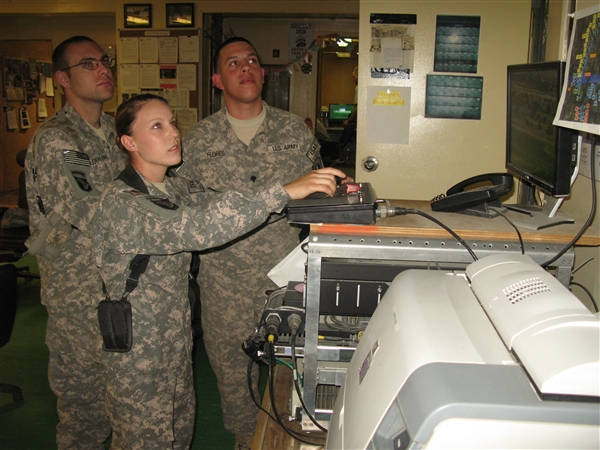ANCHORAGE, Alaska, Aug. 11, 2010 — The storyline seemed to come straight from a Cold War suspense thriller, as North American Aerospace Defense Command forces working with their Russian counterparts tracked a “hijacked” aircraft across the Pacific Ocean, but this was no movie.
NORAD and the Russia completed the first joint exercise designed to establish clear communication processes that would allow the two forces to work together during a real crisis.
The three-day exercise, called “Vigilant Eagle,” was an international air terrorism scenario conducted over the Pacific Ocean consisting of forces from the United States and Russia responding to the simulated hijacking of a B‑757 en route to the Far East. NORAD’s planning and exercise directorate sprearheaded the exercise.
Elements of the Transportation Security Administration’s operations center, the Federal Aviation Administration, the Defense Threat Reduction Agency, the 611th Air and Space Operations Group, the 176th Air Control Squadron and the Alaska NORAD Region made up the U.S. half of the exercise, while the air force navigation service’s communications and radiotech directorate, office of special translation and interpretation operations directorate and the national antiterrorism office made up the Russian half.
“What we are practicing today is the communication procedures between NORAD, plus U.S. civilian air traffic control agencies and our Russian counterparts so that we can pass on information to them about air terrorism events to allow them to posture their forces to respond in kind,” said Canadian Forces Col. Todd Balfe, Alaska NORAD Region deputy commander.
In the scenario presented by the exercise, a B‑757 jetliner, simulated by a Gulfstream 4 jet, signaled to authorities on the ground that it has been hijacked. NORAD F‑22s and an E‑3 Sentry airborne warning and control aircraft scrambled in response and followed the track of interest across the Pacific, handing it off to Russian fighters as it approached Russian territory. On the second day of the exercise, it was done in reverse, with SU-27 fighters making the hand-off to F‑22s as the “hijacked” aircraft approached Alaska. Air Force Lt. Col. John Oberst, 176th ACS operations officer, said the very fact that NORAD and Russian forces were working together in this exercise made it a success. “This exercise is one milestone in working together in other future efforts,” he said. “Our folks are proud to be a part of such an important event and are passionate about partaking in efforts to protect our borders.”
Russian air force Col. Alexander Vasilyev, deputy director of security and safety, said that despite the friction the two countries have had in years past, it is important for them to work together to combat the dangers of air terrorism.
“Terrorism is something that affects all our countries,” he said. “So it is very important that we work together to develop procedures and bring the relationship between our countries closer together to unite our countries in the fight against terrorism.”
Source:
U.S. Department of Defense
Office of the Assistant Secretary of Defense (Public Affairs)

 von
von 